Mug of the Swiss
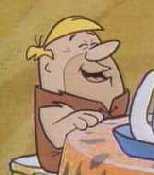 | "mug of the swiss... the mug of the swiss... mug of the swiss... the mug of the swiss..." |
Barney's voice chimed out over and over, echoing in the concrete glass and pink steel cavern of art that was Quicksilver Place.
 I had taken an old Flintstones record and I was scratching it. Not with decks like the B-Boys of New York, but with the equipment I had available to me at art school, namely, my girlfriend's old Philips record deck, which had a really stiff playing arm you could lift slightly out of the microgroove, creating ever changing loops as the record failed to progress, a Marantz cassette deck, one of two portable location recording devices, both of which rewind buttons I totally knackered by my constant use, and a four track Teac reel-to-reel.
I had taken an old Flintstones record and I was scratching it. Not with decks like the B-Boys of New York, but with the equipment I had available to me at art school, namely, my girlfriend's old Philips record deck, which had a really stiff playing arm you could lift slightly out of the microgroove, creating ever changing loops as the record failed to progress, a Marantz cassette deck, one of two portable location recording devices, both of which rewind buttons I totally knackered by my constant use, and a four track Teac reel-to-reel.I wanted a Fairlight audio sampler, but these cost £20,000 and I was going to have to wait until Casio brought down the price of sampling and lopped a zero off the price a couple of years later.
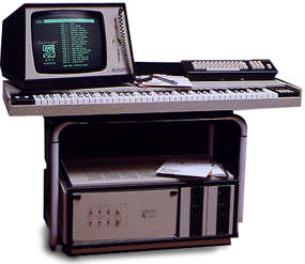 I was serious about my audio and video, spending hours in and out of college trying to emulate the sounds I could hear in the music I loved. I had a digital delay line with which I could trap about a second and a half; with M across the road, I built a sampler in a biscuit tin, which used a ZX Spectrum, good for another second or so. Multi-layered tape loops, with their inevitable, unpredictable audio decay as the magnetic oxide deposited itself on the playback head, provided an interesting and subtle backdrop for the tiny impact of stolen moments, and finally, an old analog two-oscillator synthesiser was good for drones but too Rick Wakeman for anything else.
I was serious about my audio and video, spending hours in and out of college trying to emulate the sounds I could hear in the music I loved. I had a digital delay line with which I could trap about a second and a half; with M across the road, I built a sampler in a biscuit tin, which used a ZX Spectrum, good for another second or so. Multi-layered tape loops, with their inevitable, unpredictable audio decay as the magnetic oxide deposited itself on the playback head, provided an interesting and subtle backdrop for the tiny impact of stolen moments, and finally, an old analog two-oscillator synthesiser was good for drones but too Rick Wakeman for anything else.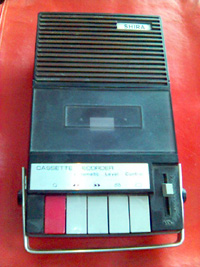 I had started this voyage aged 10, when my brother returned from Japan bearing one of the first transistorised hand-held cassette recorders anyone had ever seen. He grew bored of it, I inherited it. The microphone had a stop-start button which if you operated it during recording caused the sound to distort comically. These were the days that video cameras did not exist, and neither did audio recorders with built-in condenser microphones. I was an innocent-looking kid with a pale face and dark rings under my eyes, asking adults to speak. "Have you ever heard yourself?" I would say, proffering the mike. "No." most often the reply. "Would you like to?" "Oooh I'm not so sure..." Meanwhile, I was already recording, with my thumb busily changing the speed of the tape. "Listen, I'll play it back for you." "OOoooooooOOOOooooooH Eeerrriiiimmm NOTSOSURE" the ghostly weird scrambled parody of themselves uttered from the built-in speaker. I would watch a range of faces from astonishment to confusion to delight to annoyance, ready to run if the going got nasty.
I had started this voyage aged 10, when my brother returned from Japan bearing one of the first transistorised hand-held cassette recorders anyone had ever seen. He grew bored of it, I inherited it. The microphone had a stop-start button which if you operated it during recording caused the sound to distort comically. These were the days that video cameras did not exist, and neither did audio recorders with built-in condenser microphones. I was an innocent-looking kid with a pale face and dark rings under my eyes, asking adults to speak. "Have you ever heard yourself?" I would say, proffering the mike. "No." most often the reply. "Would you like to?" "Oooh I'm not so sure..." Meanwhile, I was already recording, with my thumb busily changing the speed of the tape. "Listen, I'll play it back for you." "OOoooooooOOOOooooooH Eeerrriiiimmm NOTSOSURE" the ghostly weird scrambled parody of themselves uttered from the built-in speaker. I would watch a range of faces from astonishment to confusion to delight to annoyance, ready to run if the going got nasty.On my first day at art school, I spoke to an italian girl, Alessandra P, who had very classical looks, the elegant hands of a Caravaggio. She had short cropped dark hair and wore completely black, skintight trousers, brothel creeper boots. Nothing unusual in that, but she did not seem to be at all interested in the abundance of "hello - who are you?"s all around us. It was all very lalala middle class darling. I was sitting apart, observing, and being laconic, which was my stock response to most things I didn't understand, but like her, I lacked social impetus for the occasion, so I went and sat down next to her and made conversation. Somewhat startled by her thick almost impenetrable accent, I talked blithely about the degree course upon which we had just enrolled. "They have recording equipment here" I said. "I want to record some music." She looked at me blankly and intoned, "I am more interested in the nature of sound... " One-nil to Italy, and the game had just begun.
Three years later, I had recorded music, hours of it. I'd steal from everywhere, throw the Flintstones together with Elgar, loop footsteps over the sound of a record rack nailed to a door, smash glass to hear the music of entropy, run tape to breaking point to hear the sound of magnetic particles leaving the audio spectrum, always borrow, borrow, borrow anything that made, treated or controlled sound.
We had cheap japanese drum machines, step-time sequencers, microphones and portastudios, and this was enough for a revolution. The charts were not yet full of instrumental stabs and impossible bombastic snares and the same loops in every track. Music was a playground and art was it's beginning point. Pretentious often, pointless frequently, but 60 years after the origination of musique concrète, the way we experienced sound and used it and interpreted it in an everyday setting was being totally changed. Entire strands of modern popular music - rap - techno - ambient - were being invented.
I did explore the nature of sound, just like Alessandra had said, speeding it up, slowing it down, chopping it up, splicing it together, creating installations that fed it back to the participants, triggering it with hidden pressure pads, looping tapes of it on cotton-reels around a forty foot room. I had exhibited sculptures incorporating it in several exhibitions, and with it composed the soundtracks to a dozen videos
At the ICA (Institute of Contemporary Arts) in the Mall, in the bookshop, as one of the up-and-coming artists in the New Contemporaries exhibition, I was talking to the man in charge there, nice chap, about my audio cassette. "Yes" he said, looking at the purple cover and smiling, "you can leave some here."
This is the place I first sold my audio recordings.
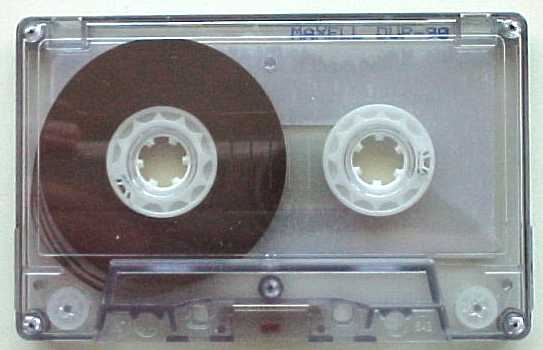
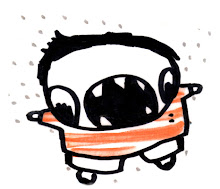








3 Comments:
oy. that reminds me of a link you promised me. once. long ago.
http://cassetiquette.blogspot.com
http://cassetiquette.blogspot.com
Post a Comment
<< Home